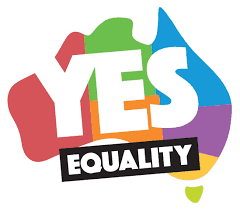Wedding Cars Glossary
(Courtesy stylemepretty.com)
Antique: Antique cars are more than 45 years old. To truly be an antique car, the vehicle must not have been modified in any way and should have been maintained so that it closely resembles its original design.
Chauffeur: The person responsible for driving the bridal party to the venue.
Classic: Classic cars are between 20 and 40 years old. To truly be a classic car, the vehicle must not have been modified in any way. Classic cars are maintained, throughout the years, in a way so that they closely resemble their original design.
Footman: Traditionally, a footman was a servant who accompanied his master on a horse drawn carriage and ran errands so that his master could remain seated. Nowadays, horse-drawn bridal carriages often come with a driver and a footman, who is responsible for attending to the bride’s every need on the way to the ceremony and then for ensuring the comfort of the bride and groom on the way to the reception.
Horse drawn carriage: A vehicle which consists of a decorative cabin, either open-roofed or close-roofed, which is pulled by up to twelve horses (although twelve seems a little excessive for even the most formal of wedding occasions).
Hot-rod: Many car enthusiasts argue that hot-rods and muscle cars are one and the same thing. However, technically speaking, a hot-rod is a highly modified car, most commonly a Ford, which was produced in the 1930s. Rocking up to your wedding in a car from the ‘30s is bound to make quite a statement.
Limousine: Often abbreviated to “limo”. A luxury, chauffeured car, which often features a panel, which can be closed to separate passengers from the driver. Not be confused with “stretch limousine” (see below).
Low emission vehicle: Couples who choose to have environmentally friendly weddings often choose to arrive in low emission vehicles because they emit much lower levels of environmentally damaging fumes.
Muscle car: As mentioned earlier, many car enthusiasts believe that there is no difference between hot-rods and muscle cars. However, muscle cars are generally believed to be a high powered vehicle produced in the 1960s, such as a Mustang or a Camaro. Heads will certainly turn if you arrive at your wedding in a muscle car.
Off-road: A luxury four-wheeled-drive car. Range Rovers, Jeeps and Hummers are popular choices as off-road wedding cars.
Ribbon: There are many different types of ribbon used for various aspects of the wedding. The car ribbon is a wide ribbon which is used to decorate the bonnet of the bridal car. It is stretched from the driver’s door, down to the front of the bonnet and back up to the front passenger’s door in a V shape and is usually adorned with a big bow or garland.
Sports car: A car which is designed for speed (but usually not on your wedding day). Most sports cars are only two seaters so the Father of the Bride may drive his daughter to her wedding in one of these. Sports cars can be convertible or close-roofed but may be too small to fit some dress types.
Stretch limousine: A luxury style car, which comes with a chauffeur, and is much longer than a sedan. Stretch limousines can be as long as eight metres! Stretch limousines are a practical vehicle choice for transporting a large bridal party but parking can be a hassle.
Vintage: A vintage car is a car which was made between 1919 and 1930. Vintage cars are rarely found in their original condition and so, cars from this era which have been modified still qualify as being “vintage”.
Vis-a-Vis: A French term for “face to face”. Vis-a-Vis refers to a horse drawn carriage where the passengers are seated facing one another.





